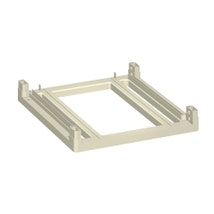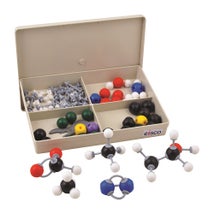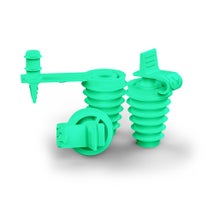Joules Calorimeter, Fully Assembled, 2 ohms, Each
The Joule’s Calorimeter is a fully assembled unit designed for determining the specific heat capacity of a liquid using the electrical method.
It includes an insulated top plate, two 4mm diameter socket head terminals, a compact heating element, and a plastic stirrer. These components work together to ensure accurate and efficient experimentation.
Heating Element & Electrical Specifications
The heating coil provides an approximate resistance of 2 ohms, making it suitable for operation within a voltage range of 2 to 12 V.DC. This precise control over the heating process allows for accurate experiments involving liquid substances.
The unit is specifically designed to be used with a standard copper calorimeter cup measuring 50mm in diameter and 75mm in depth, ensuring compatibility with conventional laboratory setups.
Experimental Applications
The primary function of the Joule’s Calorimeter is to elevate the temperature of liquids, typically water, to determine the electrical equivalent of heat. By measuring the energy required to raise the temperature of a known quantity of water by a specific amount, users can perform accurate thermal energy calculations, making it a valuable tool for physics and chemistry experiments.
How to Avoid Corrosion
- Thoroughly dry the vessel after cleaning to prevent moisture-induced copper corrosion.
- Store the vessel in a cool, dry area with low humidity.
- For extra protection, wrap the vessel in a sealed plastic bag with silica gel packets to absorb residual moisture.
DISCLAIMER! Breaches in the nickel plating may still pose a challenge in fully preventing corrosion.
Product Features
- Fully Assembled Design: Ready for immediate use in laboratory experiments, eliminating the need for additional setup.
- Insulated Top Plate & Plastic Stirrer: Ensures efficient heat retention and uniform liquid mixing for precise measurements.
- Durable Heating Element: Features an approximate 2-ohm resistance for controlled and consistent heating.
- Standard Calorimeter Cup Compatible: Fits any 50mm diameter x 75mm deep copper calorimeter cup, ensuring seamless integration into existing lab setups.
- Voltage Range of 2 to 12 V.DC: Allows flexibility in controlling heat application for various experimental conditions.
- Designed for Precise Heat Calculations: Enables the determination of the electrical equivalent of heat, supporting accurate thermal energy studies.
- Manufactured In Australia: Ensures high-quality construction and adherence to strict manufacturing standards.
Specification
| Label | Value |
|---|---|
| Type | Joule's Calorimeter Complete |
| Heater Element | 2 ohm Approximately, 2 to 8 V.DC Operation (With Element Immersed) |
| Unit Dimensions | 105mm Height x 55mm Diameter |
| Unit Weight | 0.096kg |
| Country of Origin | Australia |
Product Questions
Estimated Lead Times
Special Order products are ordered from the manufacturer once your order is placed.
Please allow up to 2 weeks for processing and delivery.
Specification
| Label | Value |
|---|---|
| Type | Joule's Calorimeter Complete |
| Heater Element | 2 ohm Approximately, 2 to 8 V.DC Operation (With Element Immersed) |
| Unit Dimensions | 105mm Height x 55mm Diameter |
| Unit Weight | 0.096kg |
| Country of Origin | Australia |
Product Questions
Estimated Lead Times
Special Order products are ordered from the manufacturer once your order is placed.
Please allow up to 2 weeks for processing and delivery.
| Qty | Saving | Price |
| 25+ | 14 % | $54.20 |









